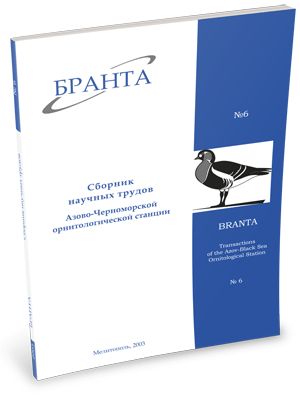
Transactions
of the Azov-Black Sea Ornithological Station



Distribution and number of Long-legged Buzzard (Buteo rufinus) in Ukraine.
Strigunov V.I., Milobog Y.V., Vetrov V.V.
A breeding population of Long-legged Buzzard (Buteo rufinus) has been existing in Ukraine (Cherkassy, Poltava and Kirovograd region) from historic times.
There are different hypotheses regarding to its origin and formation: insular hypothesis - from its former range (Strigunov, 1984, 1987) and invasive one - Balkan-PreCaucasian origin (Grinchenko et al., 2000). Trying to solve this problem in 2001-2003 we took a detailed search of the Right-bank steppe and a part of forest-steppe zones of Ukraine. The Left-bank steppe zone was also partially investigated.
About 15,000 km were ridden by "Niva" car. In total there were 58 observations of Long-legged Buzzard during its breeding period, 51 records can consider to be breeding ones. Not less 20 immature and summering individuals were also registered.
Formation and distribution of Ukrainian population of Long-legged Buzzard were examined on basis of a mapping method along with using literary and inquiry data.
Since the end of 19th century the breeding of Long-legged Buzzard is regularly registered in Ukrainian forest-steppe zone. Comparative analysis of finds (fig. 1,2) clearly demonstrates many-vectorial invasion of species from the near Dnieper part of forest-steppe zone, where the insular population had existed for more than a century.
Along with this Ukrainian and Bulgarian populations began increasing their numbers practically simultaneously - from 1970s, probably having almost equal numbers.
First finds of Long-legged Buzzard nests in the south of Odessa region (2003) evidently prove the start of its invasion from Romania. As for the Crimean group of this species, the question is still unclear. Probably it was formed from wintering individuals of the forest-steppe insular population. We estimate present numbers of Long-legged Buzzard in Ukraine as not less 150-200 pairs. Possible reasons of increasing numbers of Long - legged Buzzard are still under discussion.
Read the paper in a PDF file